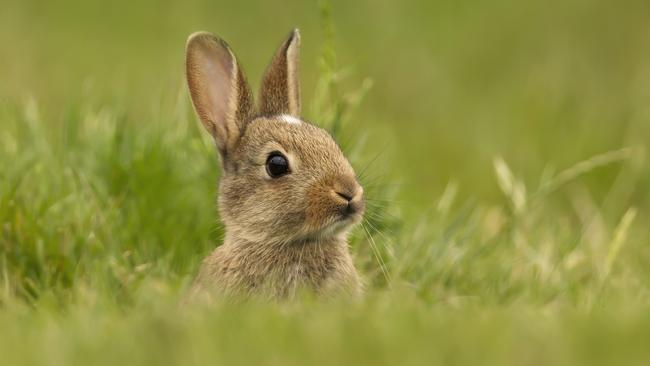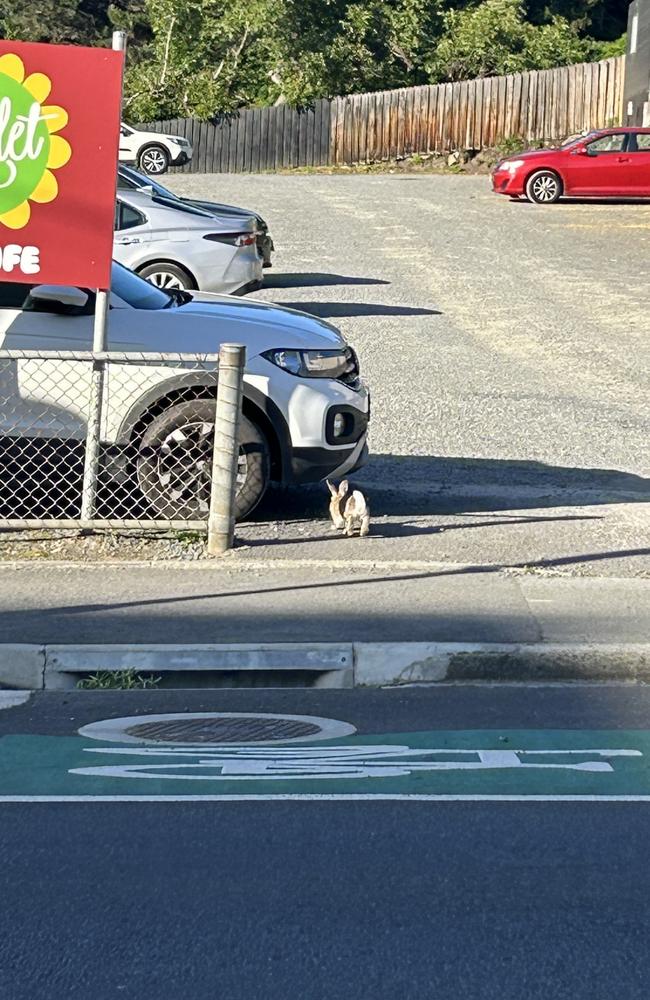Ben Lohberger wants questions asked about measures to control rabbit invasion
In an unprecedented invasion, rabbits are invading backyards and even hopping around the Hobart CBD. Read why a councillor wants to know about measures to control them.

Tasmania
Don't miss out on the headlines from Tasmania. Followed categories will be added to My News.
A Hobart councillor is worried about an unprecedented rabbit invasion – including in the CBD – but Biosecurity Tasmania says it plans to soon have a cull.
A lack of calicivirus (RHDV) in Australia last year – which is used to control rabbit populations – has created challenges with wild rabbits across the state, particularly in suburban areas.
At Tuesday night’s Hobart City Council meeting, Ben Lohberger, is seeking support for the Lord Mayor to write to the government about a rabbit baiting program that took place on the Ogilvie campus of Hobart City High School during the Christmas break.
He wants the government to tell Hobart people about the “growing influx” of rabbits, what it is doing about the problem and before any future baiting programs are done.

“It is clearly a big issue, and it presents a risk to people playing sport in particular, breaking their ankle if they step in a hole,” Mr Lohberger said.
“There’s also the danger of them on the bike track, because they’re unpredictable when you ride past them.
“The rabbit issue is clearly spreading, because the geography of the complaints to me has spread and rabbits have been seen in the city in Collins St near the old tepid baths.”
Mr Lohberger said it was vital people were told about baiting programs.
“I totally understand that they need to do something about the rabbits,” he said.
“(But) I really would like them to communicate better.
“It’s poison and dangerous, and people just need to know when it’s being put there, what it is and what the antidote is.
“Can they just communicate a bit more clearly to local communities?”

Biosecurity Tasmania said there had been challenges controlling wild rabbits across the state due to unfavourable weather conditions and a lack of RHDV.
“This has been exacerbated by the unavailability of calicivirus (RHDV) in Australia last autumn, which prevented the usual release for population control,” a spokesperson said.
“Biosecurity Tasmania has recently received a resupply of RHDV to allow biological control for rabbit populations in Tasmania when conditions become suitable, expected to be by the end of summer or autumn 2025.
“Biosecurity Tasmania undertakes rabbit control using RHDV when conditions are suitable for a successful release as recommended by scientific studies.”
The spokesperson said RHDV was a natural virus strain that only affected rabbits.
“Biosecurity Tasmania monitors conditions carefully to identify opportunities to release the virus which will yield the best results.
“It is also important to note that RHDV is most effective when used as part of an integrated rabbit control program.
“A successful RHDV release will not eliminate all rabbits, and it is recommended landowners employ other targeted rabbit controls following a release to reduce rabbit numbers as far as possible.”
Biosecurity said destroying rabbit warrens and removal of vegetation where rabbits hide was essential to slow repopulation after an RHDV release.
Originally published as Ben Lohberger wants questions asked about measures to control rabbit invasion



